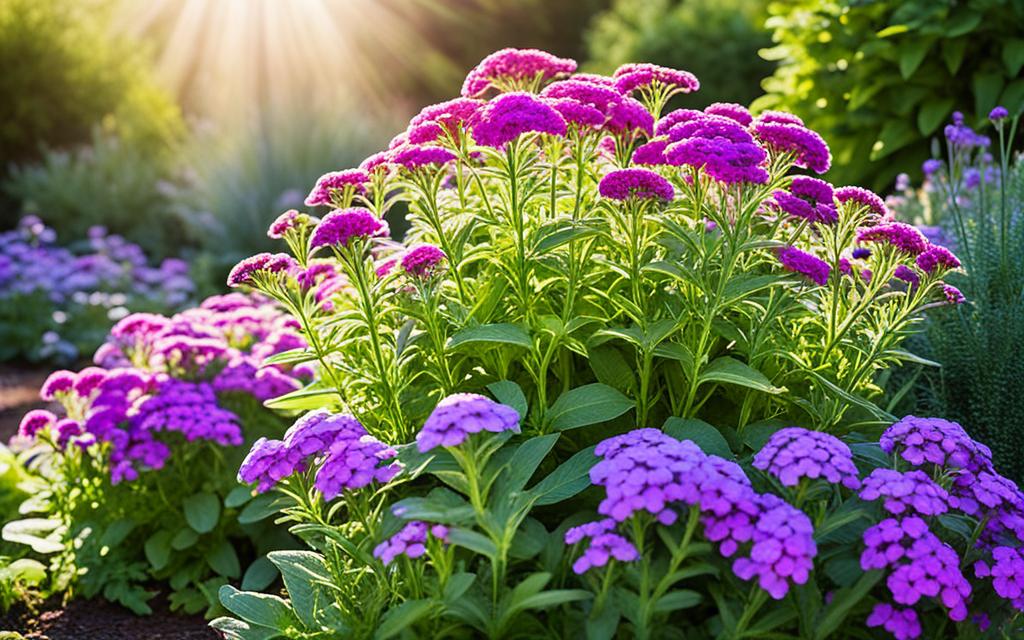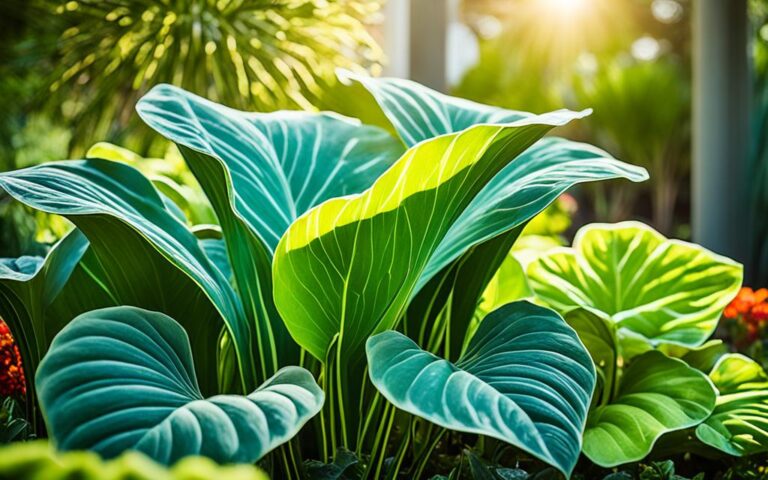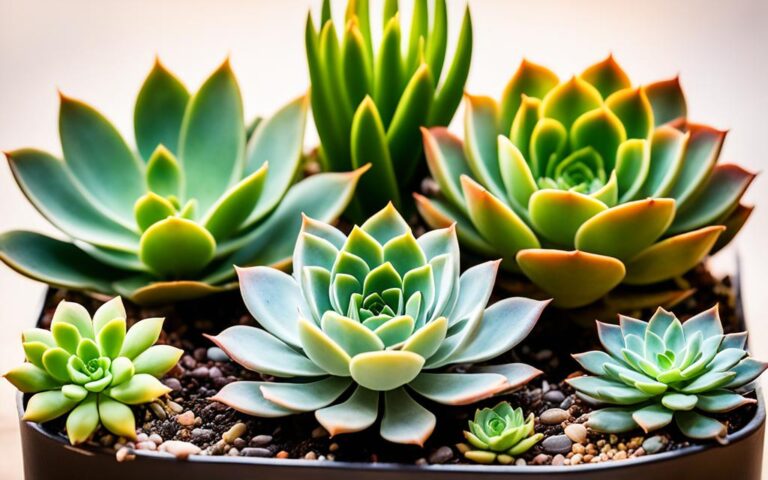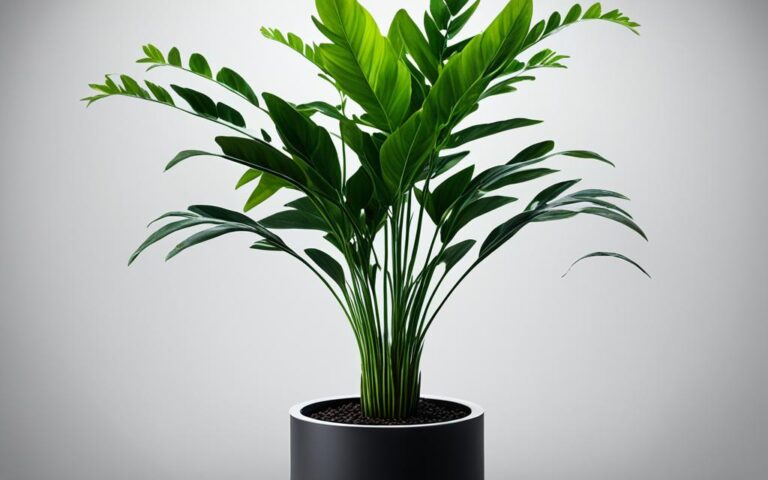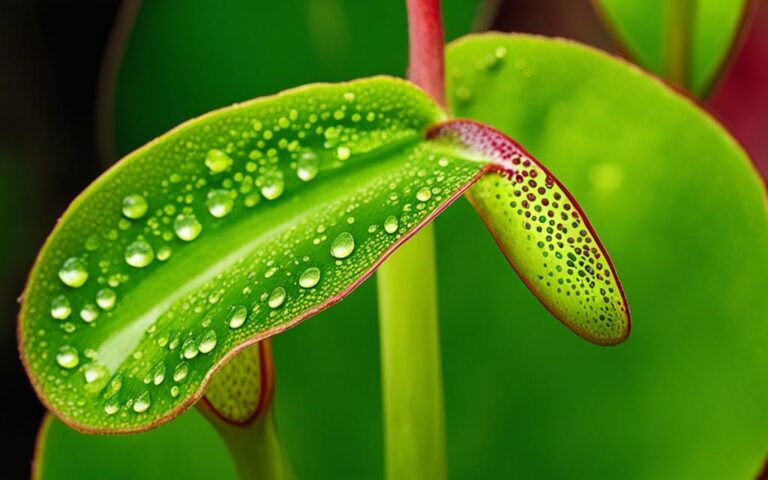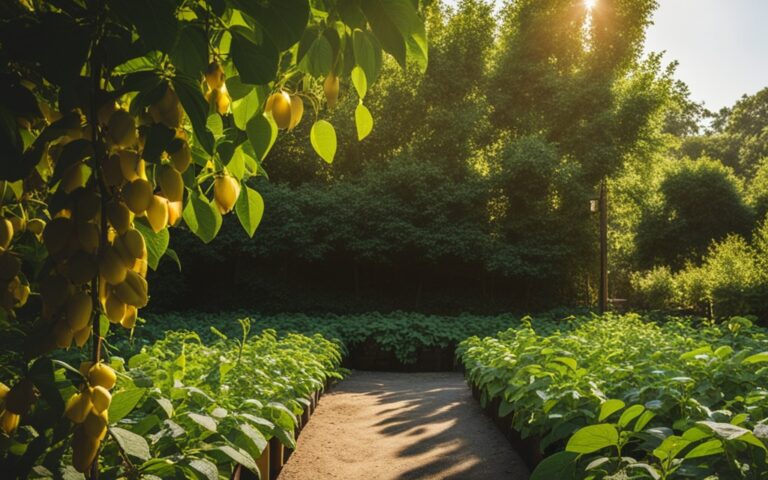Verbena Plant: Colorful Blooms for Your Garden
Did you know there are over 250 species of verbena plants? They come in many colors and types, perfect for any garden. These plants have long-lasting blooms that attract hummingbirds, bees, and butterflies. They love the scent and colors, which range from pink to blue-violet and even bicolored.
Verbena plants are easy to care for and fit well in many places. You can put them in hanging baskets, containers, borders, or as groundcover. They’re great for adding color to your garden or creating a spot for pollinators. The verbena plant is a top pick for gardeners.
Key Takeaways:
- Verbena plants come in a wide range of vibrant colors and growth habits, from low-growing and trailing to somewhat upright.
- These plants are attractive to pollinators like hummingbirds, bees, and butterflies, making them a great addition to any garden.
- Verbena plants are relatively easy to care for, requiring full sun, well-drained soil, and regular watering.
- Certain verbena varieties are more robust, mildew resistant, and resilient compared to older varieties.
- Verbena plants can be grown from seed, except for some non-seeding hybrids, and are a popular choice for gardeners.
Introduction to Verbena Plants
Verbena plants belong to the Verbenaceae family. They come from the Americas, Europe, and Asia. These flowers are loved for their bright, fragrant blooms that bloom from spring to frost. They are popular because they last a long time, can handle drought, and attract butterflies and hummingbirds.
Importance and Popularity
Verbenas are a favorite in gardens and landscaping for their beauty and hardiness. They come in many colors like white, lilac, pink, and purple. This makes them stand out and add beauty to any place. They also bloom for a long time and can survive with little water, making them great for busy gardeners.
Interesting Facts
- The Verbena genus has about 150 species of plants that bloom every year or come back each year.
- Most Verbena species are from the Americas and Asia. But Verbena officinalis, the common vervain, is from Europe.
- Verbena plants have been used in traditional medicine and are part of the 38 plants used in Bach flower remedies.
- In the Victorian language of flowers, verbena meant enchantment and sensitivity.
These interesting facts show how versatile and historically important verbena plants are. They are valuable in gardens and for health.
Types of Verbena Plants
The verbena plant family is very diverse, with over 250 species. They offer a wide range of growth habits, flower colors, and cold hardiness. Gardeners can pick from many types of verbena plants to fit their needs and growing conditions.
The Garden Verbena (Verbena x hybrida) is a popular choice, growing 6-18 inches tall and 12-30 inches wide. It comes in dozens of flower colors. Another favorite is the Purpletop Verbena (Verbena bonariensis), which grows 3-6 feet tall and 1-3 feet wide. It attracts butterflies and other pollinators.
For gardeners in USDA zones 7-10, the Tuberous Verbena (Verbena rigida) is great. It’s very tolerant of heat and humidity. This verbena variety grows low and spreads out, making it perfect as a groundcover.
| Verbena Variety | Growth Habit | Flower Color | Hardiness |
|---|---|---|---|
| Meteor Shower® | Upright, 12-18 inches tall | Pale lavender | Annual |
| Superbena® Whiteout™ | Trailing, 12-18 inches wide | White | Annual |
| Superbena® Royale Plum Wine | Trailing, 12-18 inches wide | Velvety plum | Annual |
| Superbena Sparkling® Amethyst | Trailing, 12-18 inches wide | White and amethyst | Annual |
| Superbena® Violet Ice | Trailing, 12-18 inches wide | Deep lavender with white eye | Annual |
| Superbena® Raspberry | Trailing, 12-18 inches wide | Rich raspberry-pink | Annual |
With both low-growing and tall varieties, the verbena plants offer many options for gardeners. They can create beautiful displays in their outdoor spaces.
Anatomy of Verbena Plants
Verbena plants are a sight to see, with their bright flowers and unique leaves. They are perfect for any garden. Let’s take a closer look at what makes them special.
Description of Leaves, Stems, and Flowers
Verbena leaves are shaped like lances and have fine teeth along the edges. The stems vary, from straight to trailing, depending on the type. But the real highlight is the flowers. These small flowers come in many colors like pink, red, purple, and blue-violet. Some even have two colors.
Special Features
Verbena plants stand out for many reasons. They draw in butterflies, bees, and hummingbirds, making gardens more lively. They also love the heat and dryness, so they’re easy to care for in hot places.
Verbena plants are a joy for garden lovers. They have beautiful flowers, varied leaves, and can thrive in tough conditions. Knowing more about their anatomy helps us see why they’re so special in gardens.
Ideal Growing Conditions for Verbena Plants
Verbena plants do best in certain conditions that meet their needs. To get a lush verbena garden, know what light, temperature, humidity, soil, and water they need.
Light Requirements
Verbena loves the sun and needs at least 6-8 hours of direct sunlight daily. They grow best in full sun, soaking up the sun’s rays to produce beautiful, colorful flowers.
Temperature and Humidity
Verbenas are heat and drought tolerant, fitting many climates. They handle warm temperatures and moderate humidity well, adjusting to various environments.
Soil Requirements and pH
These plants like well-drained soil and can grow on different soil types. The soil should be a bit acidic to neutral. They don’t do well in wet, heavy soils, which can cause root rot.
Watering Needs
Verbenas need regular, moderate watering, especially if they’re in pots. They can survive short droughts but bloom and grow best with steady moisture.
Knowing the best conditions for verbena plants helps gardeners create a beautiful, colorful verbena garden. This garden will be a joy to see all season long.
Propagation Methods for Verbena Plants
Verbena plants can be grown from verbena growing from seed or through vegetative methods. Some hybrid varieties don’t produce seeds. Start seeds indoors 8-10 weeks before the last frost. Then, move them outside when the soil gets warm.
You can also use verbena propagation by taking cuttings from healthy plants. Cut 10cm long softwood cuttings and root them in moist mix. They can root in 2-4 weeks. Semi-ripe cuttings, taken in summer or early autumn, bloom the next year.
- Verbena can be propagated by collecting seeds from existing plants.
- Softwood cuttings for verbenas should be around 10cm in length and can root within 2-4 weeks.
- Semi-ripe cuttings for verbenas are typically taken later in summer or early autumn.
- Overwintering verbenas under glass at around 7°C is recommended.
- Softwood cuttings may flower in the same year, while semi-ripe cuttings usually bloom the following year.
Hybrid verbenas do best with stem cuttings to get identical plants. This method is key for successful verbena growth, whether from seeds or cuttings.
| Characteristic | Details |
|---|---|
| Genus Name | Verbena |
| Common Name | Verbena |
| Plant Type | Annual, Perennial |
| Light | Sun |
| Height | 6 to 12 inches |
| Width | 12 to 20 inches |
| Flower Color | Blue, Pink, Purple, Red, White |
| Foliage Color | Blue/Green |
| Season Features | Fall Bloom, Summer Bloom |
| Special Features | Good for Containers |
| Zones | 7, 8, 9 |
| Propagation Methods | Seed, Stem Cuttings |
Care and Maintenance of Verbena Plants
Verbena plants need a bit of care to stay beautiful and healthy. They are mostly easy to take care of. But, there are some important things to do for them to grow well.
Pruning and Training Techniques
Don’t worry about cutting off dead flowers on verbena plants. They clean themselves and keep blooming. But, some types like trailing or groundcover might need a little trimming to look neat. Cut back perennials in early spring before they start growing again.
Pests and Diseases
Spider mites and aphids can bother verbena plants. Keep the air around them moving and use organic soaps to fight pests. To stop powdery mildew, don’t water them from above and make sure they have good air flow.
Fertilizers
Give verbena plants balanced fertilizers often. This helps them grow strong and bloom a lot. Put the fertilizer down in early spring and again in the middle of the season for the best effect.
| Verbena Care Essentials | Recommended Practices |
|---|---|
| Pruning | Deadhead spent flowers, trim trailing/groundcover varieties as needed, prune perennials in early spring |
| Pest Management | Monitor for spider mites and aphids, use organic insecticidal soaps |
| Disease Prevention | Avoid overhead watering, ensure good air circulation to prevent powdery mildew |
| Fertilization | Apply balanced, slow-release or water-soluble fertilizers in early spring and mid-season |
Follow these verbena care tips to make sure your verbena plants do well. They will keep giving you beautiful flowers all season.
Benefits of Growing Verbena Plants
Verbena plants bring many benefits to gardeners and nature lovers. They bloom for a long time, from spring until frost, adding color to your garden. These flowers are a treat for the eyes and help pollinators too.
Verbena attracts many pollinators like hummingbirds, bees, and butterflies. Their rich nectar draws these important creatures, helping your garden’s biodiversity. By welcoming these visitors, you support your local ecosystem.
Verbena is known for being tough and easy to care for. It’s perfect for gardeners who like to keep things simple or face tough growing conditions. These plants do well in different soils and settings, fitting into many garden styles and spots.
| Benefit | Description |
|---|---|
| Long-Blooming | Verbena plants provide a continuous display of color from spring to frost, offering a vibrant and extended flowering season. |
| Pollinator Attraction | The nectar-rich blooms of verbena plants attract a diverse range of pollinators, such as hummingbirds, bees, and butterflies, supporting local biodiversity. |
| Low Maintenance | Verbena plants are relatively easy to care for, requiring minimal effort once established, making them an ideal choice for gardeners with busy lifestyles. |
| Drought Tolerance | Verbena plants are drought-tolerant, allowing them to thrive in various growing conditions and making them suitable for xeriscaping or harsh environments. |
| Versatile | Verbena plants can be integrated into a wide range of garden designs, from rock gardens and hanging baskets to groundcovers, showcasing their adaptability. |
Verbena plants are a gem for any gardener. They offer vibrant colors, attract pollinators, and are easy to care for. Adding them to your garden means enjoying a beautiful space that’s good for nature too.
Verbena Plant Varieties
The verbena plant family has many unique varieties, each with its own look. These plants bring color and life to gardens. They offer a wide range of options for gardeners.
Common Species
Popular verbena species include the Garden Verbena (Verbena x hybrida), Purpletop Verbena (Verbena bonariensis), and Tuberous Verbena (Verbena rigida). The Garden Verbena is loved for its growth habit and many flower colors. Purpletop Verbena is known for its tall plants and beautiful purple flowers. Tuberous Verbena does well in hot and humid places.
Unique Characteristics
- Improved disease resistance and larger flowers in the Superbena and Lanai series
- Vibrant color options ranging from white and pink to deep purple and red
- Varying growth habits, from compact mounds to trailing vines
- Unique fragrances, including lemon, rosemary, and sweet violet notes
- Adaptability to diverse growing conditions, from full sun to partial shade
With so many verbena plant varieties, gardeners can find the perfect plant for their garden. Whether you want a plant that trails, grows tall, or smells nice, there’s a verbena for you.
| Verbena Species | Bloom Period | Height | Characteristics |
|---|---|---|---|
| Verbena hastata | July to September | 100-150cm | Blue Spires, Pink Spires, White Spires, and Rosea varieties |
| Verbena rigida (Slender vervain) | June to October | 60cm | Spike-like inflorescences |
| Verbena stricta (Hoary vervain) | July to August | 60cm | Large flowers on spikes |
From classic verbena common species to unique verbena plant varieties, gardeners have many choices. They can add color and beauty to their gardens.
Verbena Plant in Landscaping
Verbena plants are versatile and great for many landscaping uses. They grow well in hanging baskets, window boxes, and containers. Verbena groundcover varieties add color and texture to garden beds and borders. Taller species like Purpletop Verbena can be structural elements or backdrops in mixed borders.
Verbenas are perfect for creating colorful displays in the garden. They come in many colors like white, pink, red, lavender, blue, and purple. This makes them easy to fit into different garden styles and themes.
Verbena border plants bloom from spring to the first frost if trimmed back in mid-summer. This long bloom time makes them a great choice for gardens. They add color and interest all season long.
| Verbena Landscaping Uses | Key Characteristics |
|---|---|
| Verbena container gardening | Trailing or mounding growth habits, suitable for hanging baskets and window boxes |
| Verbena groundcover | Adds color and texture to garden beds and borders |
| Verbena border plants | Taller species can be used as structural elements or backdrop plants in mixed borders |
| Mass plantings of verbena | Creates vibrant, colorful displays throughout the garden |
Verbena landscaping uses are versatile because of their growth habits, color variety, and long bloom time. They’re great for creating beautiful container displays, lush groundcover, or vibrant borders.
Companion Plants for Verbena
Verbena plants are versatile and pair well with many other flowers in the garden. These verbena companion plants make beautiful container plantings or mixed borders. They complement each other’s unique looks.
Pairing verbena with plants like lavender, lantana, and petunias adds color and interest. Taller plants like fountain grass and hydrangeas also work well. They provide a nice backdrop for verbena’s vibrant colors.
When picking plants that complement verbena, think about their light, water, and soil needs. Verbena mixed plantings with different plants create a beautiful garden.
| Companion Plant | Characteristics |
|---|---|
| Marigolds | Attract pollinators and offer vibrant yellow and orange blooms |
| Nasturtiums | Versatile companions with various color options and easy growth |
| Zinnias | Long-blooming annuals that share similar watering requirements |
| Ornamental Grasses | Provide texture, movement, and shelter for small wildlife |
“Verbenas are known for their long flowering period, with varieties that bloom every month except winter.”
Choosing the right verbena companion plants helps create a beautiful garden. It shows off verbena’s colors and adds complementary elements. This makes for a captivating outdoor space.
The verbena plant Phenomenon
In recent years, verbena plants have become more popular among gardeners and landscapers. The Superbena and Lanai series, with their disease resistance, have led to this trend. These plants are easy to care for and add bright colors to gardens and containers.
Verbena plants are versatile and good for pollinators, attracting many beneficial insects. This makes them a top choice for eco-friendly gardens that help local ecosystems.
| Verbena Popularity Trend | Verbena Gardening Trends |
|---|---|
|
|
The rise of verbena plants is not just about their looks. They offer practical benefits for gardeners and the environment. As more people enjoy growing these tough and adaptable plants, verbena’s popularity will likely keep growing.
Conclusion
The verbena plant is a favorite in gardens across the United States. It has vibrant, long-lasting flowers and is easy to care for. Gardeners love it for its beauty and how it attracts pollinators.
It’s great as groundcover, in containers, or in borders. The verbena plant makes any garden look stunning. It’s a reliable choice for gardeners.
To keep verbena plants healthy, gardeners need to know the best growing conditions. They should also learn how to propagate and care for them. This way, verbena can be a long-time favorite in gardens.
The verbena plant is versatile and valuable in any garden. It comes in many varieties and has unique traits. It’s a great choice for gardeners.
In summary, the verbena plant is amazing for gardens. It brings beauty, attracts pollinators, and offers many benefits. Gardeners enjoy its vibrant colors, sweet scent, and easy care.
